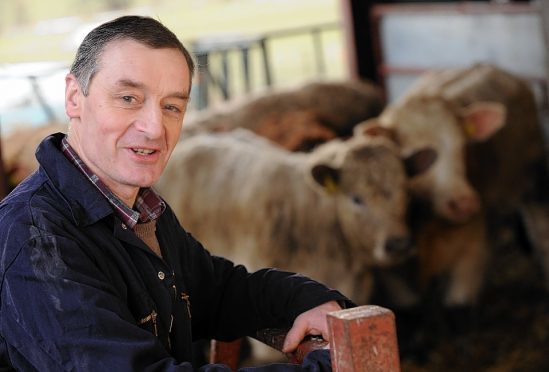Aberdeenshire farmer and NFU Scotland livestock committee chairman Charlie Adam outlines some of the issues the union’s livestock team is working on – bovine EID, BVD eradication and the Beef Efficiency Scheme
A practical, reliable integrated Bovine EID system working seamlessly at farm, mart and abattoir level, and using high quality tags which allow those not equipped electronically to operate in parallel, could deliver multiple benefits including accurate, speedy animal identification and easy, error free record keeping.
To achieve this, various industry stakeholders in all parts of the UK must agree a compatible system which will work across the UK and hopefully beyond.
ScotMoves is in place, a replacement for BCMS is due in 2019 and creation of a fit for purpose Scottish cattle identification and movement system is expected in the near future. After years of procrastination, we are urging Scottish Government, Defra and the other devolved administrations to bite the bullet and come together with us and other stakeholders to achieve a fully working across industry Cattle EID system as soon as possible.
After considerable progress towards BVD eradication in Scotland in recent years, the project has been in danger of losing momentum or even reversing gains made. We are delighted that Scottish Government is about to consult on the next phase of the programme.
Having designated ‘positive’ farms with persistently affected animals likely to be present, we must now use every possible measure to achieve the identification and slaughter of these animals without delay.
Initial high hopes for the Beef Efficiency Scheme, with a significant proportion of our industry joining, have evolved into a prime example of late, poor scheme administration and unclear communication by Government, with a lack of understanding of what is practical and doable on many farms.
While the situation has improved recently and hopefully the scheme will deliver useful information and some much needed cash for those still participating, as well as a step for some towards the goal of long-term genetic improvement of our national beef herd, unfortunately this has come too little, too late for many who have decided to pull out.
Since schemes of this type, where support is delivered with the aim of helping the industry to help itself, are likely to be repeated in future, lessons must be learned from the BES experience.
